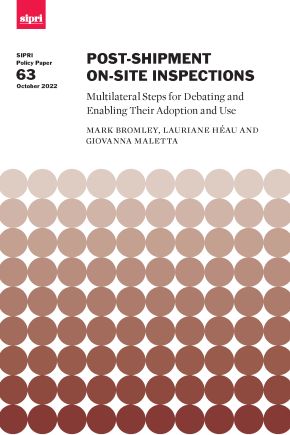Post-shipment On-site Inspections: Multilateral Steps for Debating and Enabling Their Adoption and Use

Among the key tools that states that export arms and military equipment can adopt to help to prevent and mitigate the diversion of military materiel are post-shipment on-site inspections. These inspections involve the exporting state requiring and conducting physical checks on previously authorized and transferred military materiel on the territory of the importing state. In the past decade a growing number of states have adopted and implemented this policy tool. In addition, some multilateral bodies and instruments—including forums connected to the 2013 Arms Trade Treaty, the European Union and the United Nations—have been used to exchange views on the use of post-shipment on-site inspections and to develop related good practice guidelines.
The wider use of post-shipment on-site inspections could help to prevent diversion of military materiel and reduce the human suffering that this generates, but several barriers and challenges appear to be blocking their broader adoption. This SIPRI Policy Paper reviews these barriers and challenges, and summarizes the steps that have been taken at the national level to address them. The paper then examines the steps that have been taken and that could be taken at the multilateral level to expand discussion about post-shipment on-site inspections and help to support those states that are considering adopting this policy tool. For each step, the policy paper presents a series of recommendations that could be taken forward by states, research institutes, or the executives or secretariats of relevant multilateral instruments or bodies.
1. Introduction
2. Adopting post-shipment on-site inspections: Challenges, concerns and responses
3. Multilateral bodies and instruments: Past engagement and future options
4. Options for debating and enabling the adoption and use of post-shipment on-site inspections
Appendix A. Timeline of key events of relevance to post-shipment on-site inspections and possible actions, 2022–24


